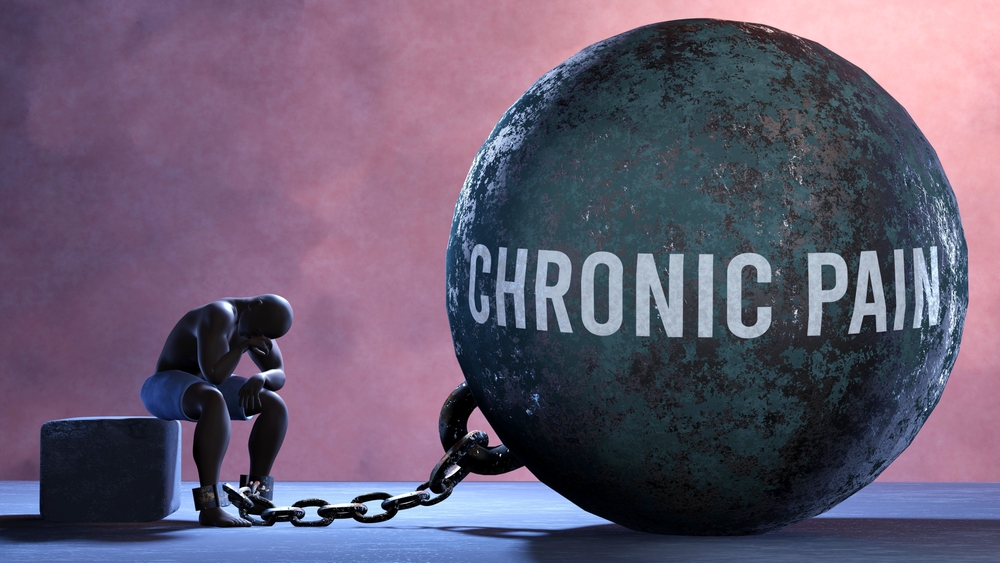Chronic pain is a complex and debilitating condition that can significantly impact a person’s quality of life. However, as Dr. Joe Dispenza has said, “if a body can make itself, it can also heal itself.” This idea speaks to the incredible power of the human body and mind to recover and restore itself, even in the face of chronic pain.
So, what is chronic pain?
Unlike acute pain, which serves a clear biological purpose, chronic pain persists long after the initial injury or illness has healed, becoming a debilitating condition in its own right. Its relentless, unremitting nature distinguishes chronic pain from its acute counterpart.
While acute pain is a warning signal that alerts the body to potential harm, chronic pain continues to fire long after the threat has passed. This maladaptive neurological process can be triggered by a wide range of underlying causes, from musculoskeletal disorders and neuropathic conditions to autoimmune diseases and cancer. Chronic pain can arise from a variety of causes, including:
Injuries or accidents
Underlying medical conditions like arthritis, fibromyalgia, or neuropathy
Chronic illnesses like cancer or multiple sclerosis
Unknown or idiopathic causes Chronic pain differs from acute pain, which is a normal response to injury or illness and typically resolves within a few weeks. Chronic pain, on the other hand, can last for months or even years and often requires a multi-faceted approach to treatment and management.
The burden of chronic pain extends far beyond the physical realm. Individuals grappling with this invisible affliction must also contend with a host of psychological, emotional, and social consequences. Depression, anxiety, and sleep disturbances are common comorbidities, as the constant battle against pain can take a heavy toll on mental well-being. Relationships, careers, and overall quality of life are often significantly impacted.
What are the most common chronic pain conditions?
- Musculoskeletal pain (back, elbow, knee, shoulder) – One of the most common forms of chronic pain, often caused by injury, age-related changes, or underlying conditions.
- Fibromyalgia – A condition characterised by widespread musculoskeletal pain, fatigue, and sleep disturbances.
- Neuropathy – Damage or dysfunction of the nerves, often causing burning, tingling, or numbness.
- Multiple sclerosis – An autoimmune disease that can cause a variety of neurological symptoms, including chronic pain.
- Cancer – Some types of cancer and cancer treatments can cause persistent, chronic pain.
- Migraines and chronic headaches – Severe, recurrent headaches that can significantly impact quality of life.
How can a holistic approach help heal chronic pain?
A holistic approach to managing chronic pain recognises that the condition involves not just the physical symptoms but also the mental, emotional, and even spiritual aspects of a person’s well-being. A holistic approach can be highly effective in supporting the body’s natural healing process by addressing the whole person rather than just the physical manifestation of pain. Some key elements of a holistic approach to chronic pain management may include:
-
Pulsed Electromagnetic Frequency Therapy (PEMF) to decrease inflammation at the cellular level
-
Bodywork such as Bowen Therapy or Facia Tension Release Therapy to improve mobility, strength, and pain management.
-
Mind-body practices like meditation, qi gong, and deep breathing reduce stress and promote relaxation. The more tension you are carrying in your body, the greater the pain will be.
-
Dietary changes, supplements, herbal and homoeopathic remedies to reduce inflammation and support overall health
-
Counselling or support groups to address the emotional and psychological impacts of chronic pain
- Lifestyle modifications like improved sleep, exercise, and stress management. By taking a comprehensive view of the individual's health and well-being, a holistic approach can help empower individuals to become active participants in their own healing journey. This can lead to greater improvements in pain, function, and overall quality of life compared to a purely medical or pharmacological approach.

Frequently asked questions
Pulsed electromagnetic frequency (PEMF) therapy is a non-invasive, drug-free treatment that can be highly effective in managing chronic pain. PEMF therapy exposes the body to low-frequency electromagnetic pulses, which help stimulate cellular repair and regeneration processes. For individuals with chronic pain, PEMF therapy can provide the following benefits:
- Reduced inflammation: The electromagnetic pulses can help decrease inflammation at the cellular level, which is a key driver of many chronic pain conditions.
- Improved blood circulation: PEMF therapy can increase blood flow and oxygen delivery to injured or painful areas, promoting healing.
- Enhanced cell metabolism: Electromagnetic stimulation can boost the activity of cells, enabling them to repair damaged tissues.
- Decreased nerve pain: PEMF therapy has been shown to help desensitize overactive nerve endings, relieving neuropathic pain.
- Increased bone and tissue repair: The electromagnetic pulses can stimulate the body’s natural regenerative processes, helping to heal underlying causes of chronic pain. By addressing the root physiological mechanisms behind chronic pain, PEMF therapy can be a valuable complementary or alternative treatment approach. When combined with other holistic interventions, such as physical therapy, meditation, and dietary changes, PEMF can help individuals with chronic pain regain function, reduce reliance on medications, and improve their overall quality of life.
Bowen Therapy is a gentle, non-invasive bodywork technique that can be effective in managing chronic pain. Developed by Tom Bowen in Australia in the 1950s, Bowen Therapy involves a series of small, rolling movements made over specific points on the body. The key principles of Bowen Therapy are:
- Gentle manipulation of soft tissues (muscles, tendons, and fascia) to encourage the body’s natural healing processes
- Allowing the body to rest and integrate the subtle movements between each set of techniques rather than performing continuous manipulation.
- Stimulating the body’s autonomic nervous system reduces muscle tension, improves circulation, and promotes relaxation. During a Bowen Therapy session, the practitioner will make a series of small, rolling movements over areas like the back, shoulders, and legs. These gentle inputs are designed to “reset” the body’s neurological pathways, reduce muscle spasms, and improve overall function. For individuals with chronic pain conditions like low back pain, fibromyalgia, or sports injuries, Bowen Therapy is a valuable complementary therapy. By improving mobility, reducing muscle tension, and optimising the body’s self-healing mechanisms, Bowen Therapy helps alleviate pain therefore improving quality of life. Read more
Facia Tension Release Therapy is a technique that focuses on releasing tension and restrictions in the fascia – the connective tissue that surrounds and supports the muscles, bones, and organs throughout the body. By working to release areas of tightness or adhesions in the fascia, this therapy may help to:
- Improve mobility and range of motion
- Reduce muscle tension and pain
- Enhance blood and lymph circulation
- Support the body’s natural healing processes. Similar to techniques like Myofascial Release or Rolfing, Facia Tension Release Therapy is a valuable complementary therapy for individuals dealing with chronic pain conditions. Targeting the fascial system helps relieve pressure, restore balance, and facilitate the body’s own self-healing capabilities.
Initial consultation cost – £125, treatments – 60 min – £55, 75 min (combined) – £75, Review – £55
